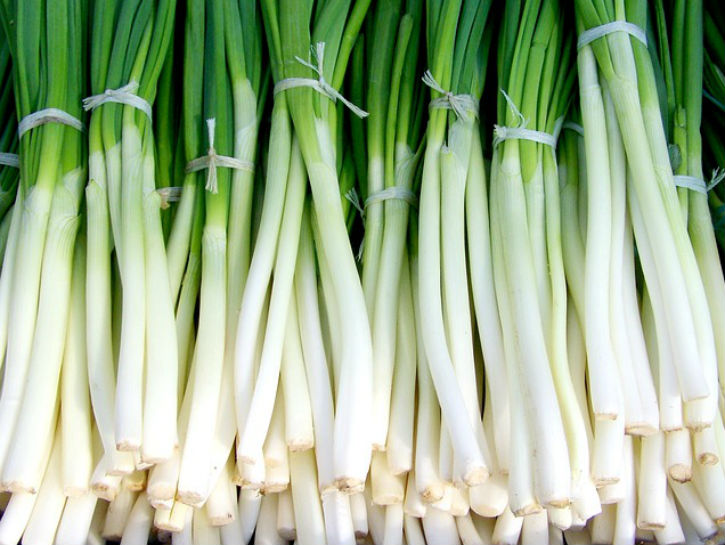We have all seen delicious dishes topped with green onions. Or are they scallions? Maybe they are spring onions? Or chives? Why are these skinny green vegetables so confusing? If you have wondered how to differentiate between scallions and green onions, or if you have wondered whether chives and spring onions are the same thing, this article will clear up the confusion.
Scallions And Green Onions

This vegetable belongs to the Allium genus, which also includes onions and chives. Many people claim that scallions and green onions are the same thing, but others disagree.
Scallions and green onions are essentially the same plant — Allium fistulosum — but there is one big difference: their age. Scallions are harvested at an earlier growth stage than green onions, and the width of the white bulb at the base of a scallion will give it away.
Since it hasn’t spent a ton of time in the ground, a scallion’s base will be slimmer than a green onion’s base, and a scallion’s bulb will usually be the same width as the plant’s stem and leaves.
All immature onions have long, green, hollow leaves with white bulbs. But scallions are different from other types of onions because they develop straight white bulbs instead of round ones.
Scallions have a mild peppery taste, and you can eat them raw or cooked. An essential ingredient in Asian cooking, scallions are available year-round, but their peak season is during the spring and summer months.
When you are choosing scallions at the grocery store, look for a bright green color and undamaged leaves. Avoid bunches with wilted, yellow leaves, and make sure the white base is firm.
Spring Onions

Spring onions do look very similar to scallions and green onions, but they have larger bulbs. They are more mature than scallions and green onions, and they get their name because the seedlings are planted in the fall and harvested in the spring.
One reason people might mistake spring onions for green onions is that in some countries, like Canada and the United Kingdom, spring onions are called green onions.
Spring onions are also part of the Allium fistulosum species, but they are more slender than scallions and green onions and have a lot more flavor because they grow for a longer period of time. They are not as strong as yellow onions, but they are much more pungent than scallions and green onions. You can eat them raw or cooked, and they are delicious when you pair them with summer veggies.
Spring onions are delicious when roasted whole with olive oil, salt, and lemon juice, and they are the perfect summer side dish for grilled chicken or beef.
Chives

Chives are related to scallions, but they are part of a different species, Allium schoenoprasum. They are most often used as a garnish. The unopened flower buds are diced and used on fish, potatoes, soups, and salads.
Cooking With Scallions, Green Onions, Spring Onions, And Chives

Since the biggest difference between scallions, green onions, and spring onions is their age, you can easily substitute them for each other in recipes. Just remember, there is a difference when it comes to intensity of flavor — especially when you serve them raw.
If you are cooking the onions, those flavors will mellow, so you really won’t be able to tell the difference.
As for chives, you don’t want to use them as a main ingredient in a dish. Instead, use them as a garnish. A few chives will give your meal extra flavor.
Now that you know the difference between scallions, green onions, spring onions, and chives, it’s time to start cooking!
